The primary focus of my corpus was to outline and decipher similarities and differences between speech amongst female and male political figures. I used the question below as sort of a guiding light, to gain more knowledge on my question. I kept this in mind through out the whole process because it would be impossible for my question to ever be fully answered, since there is an infinite amount of answers to it. I decided to create a corpus with five political speeches from a female and five from a male. I chose to use Barack Obama and Hillary Clinton to each represent their gender. I chose these political figures because there from the same political party (so that eliminate ideological differences) and there from the same relative time period. I also was cautious to use speeches that were pretty similar in discussion topics, for example, grappling with worldly or national issues.
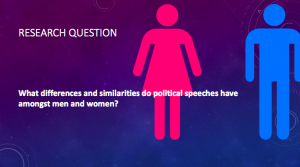
As I began my investigation on this question, the first digital tool I used was Voyant. This was a good place to start probing my question as I looked at word frequencies and phrase frequencies. I also created word clouds to paraphrase common topics that each political figure discussed a lot.
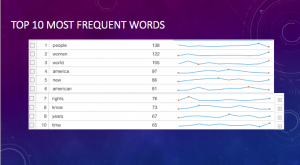
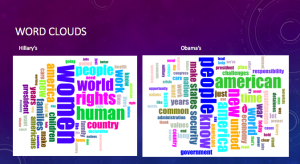
After just skimming the surface of my research question with the use of Voyant, I went on to another digital platform, Antconc. This digital platform was less user friendly, but definitely more statistical. I used the information I learned from Voyant, being that woman was the second most frequent word in my corpus, to further this notion. I came to realize that Hillary uses it much more than Obama and the only time Obama uses it is when he is saying “men and women.” I found it interesting that Obama always says “men” before “women,” so I then looked back and Hillary’s speeches only to find that she only says “women and men.” She also uses this phrasing to describe the American population much fewer times, as she sees Americans as a united entity, rather than a separated group amongst genders. I then saw that Hillary tends to refer to American’s much more often as “citizens, people, or Americans.” Additionally, when Hillary uses the word Women she often is talking about the struggles women face not only in our country, but all over the world. I found it to be very interesting, that a woman candidate is still trying to prove who women are in this day and age. On the other hand a male candidate, whether is conscious or subconscious, is still separating the male and female population, almost as a sign of inequality.
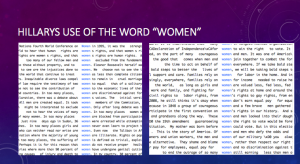
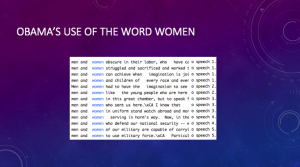
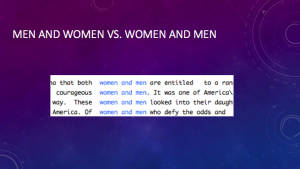
Finally, to further my question even more I used Jigsaw. This was definitely the most complicated digital platform to use and took a little more practice to get a hold of. This tool is used to show how things connect, so I made word trees for the word “Women” and other words to describe the citizens. By doing this I was able to see how each word was used in context, and how politician subconsciously group the American people when addressing them.
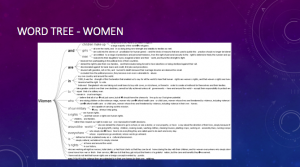
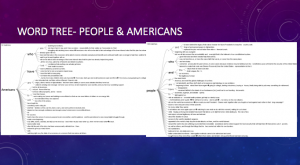
All in all, I was only able to dip my toes in the pool of knowledge that was my research question. I was able to highlight some valuable differences and commonalities between female and male political speech, but there is so much left to learn. Through the collaboration of digital tools it is evident that each one provided me with a greater insight on my subject. As I go on, and continue to explore this notion, I want to look at how Hillary discusses women, and how Obama would discuss race, as those are both to significant aspect to each candidate become elected. In conclusion, creating my corpus and exploring my research question was truly a great learning experience, and I am eager to discover all that is left to learn.